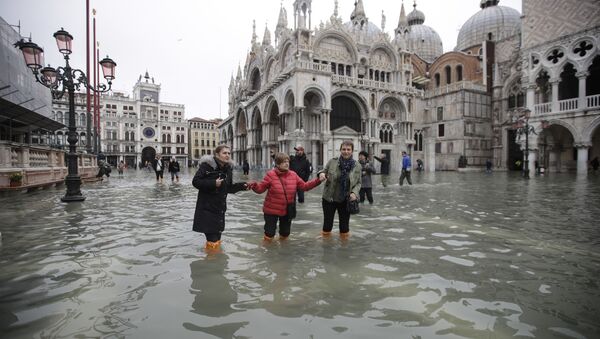Venice's distinctive canals have almost completely dried up on Saturday due to low tides, leaving its famous gondolas stuck in mud.
— JohnnyJet (@JohnnyJet) January 1, 2017
The city looked starkly different from two months ago when serious flooding caused extensive damage to the area.
The tide in Venice reached its highest in over 50 years at 187cm (6.14ft), causing up to 70% of the canal-imbued city under salt water.
To prevent further damage, the city worked quickly to protect its precious artworks from being destroyed.
Luckily, Venetian institutions such as The Accademia, the Ducal Palace, and the Correr Museum have all confirmed that none of their works of art have been damaged.
The United Nations also said that a UNESCO World Heritage team was “closely monitoring the state of conservation of the World Heritage Site of Venice and its lagoon” adding that “the site is also highly vulnerable to the negative impacts of climate change”.
According to Sky News, lodge bookings dropped 40% due to the flooding, the worst decline for the city's tourism since 1966,
— Sara Welch (@SaraWelchKTLA) July 15, 2014
The northeastern Italian city is built on 118 small islands and broken up by canals which traverse throughout the area as well as 400 bridges, making the area a tourism hotspot.
Its permanent population is just above 260,000 people and receives millions of tourists annually.
— Fon H Davis (@FonHDavis) January 11, 2020


